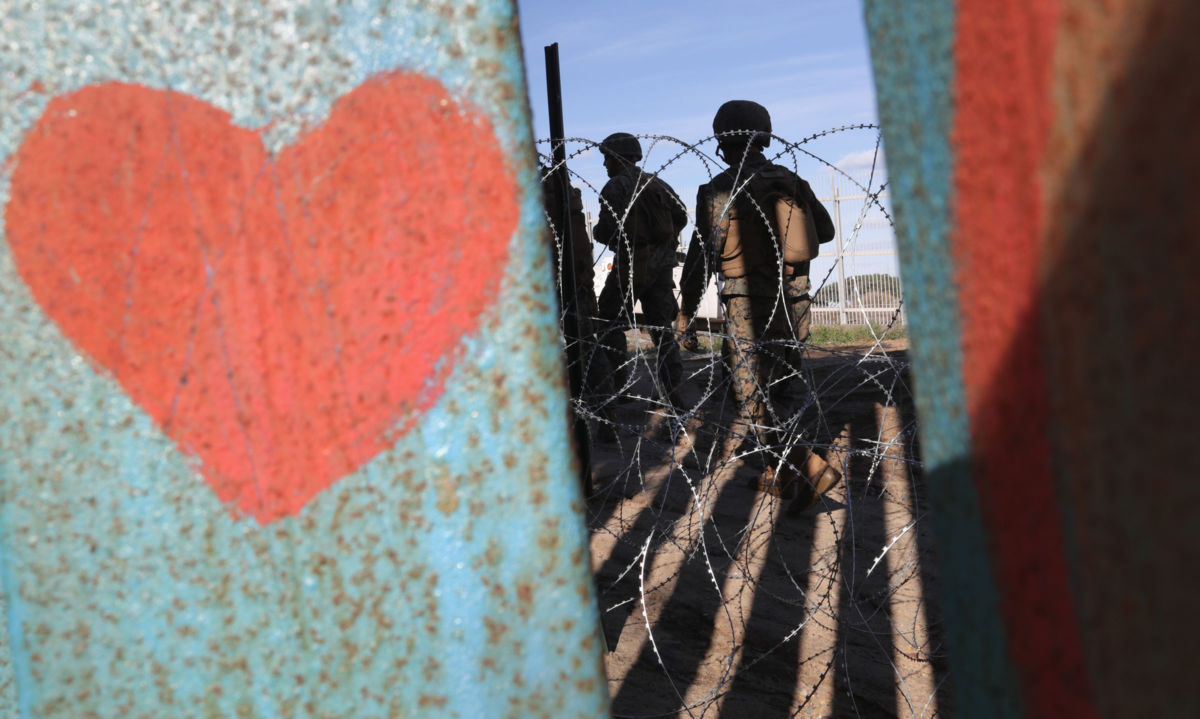Nearly a year after a judge rejected Santos Chirino’s case for asylum, his 18-year-old daughter and 19-year-old son returned to the very same courtroom to plead their own.
“Your honor, this is a difficult case,” their father’s lawyer, Benjamin Osorio, told Judge John Bryant. “I represented their father, Santos Chirino Cruz. … I lost the case in this courtroom. … He was murdered in April.”
As Maria Sacchetti described for The Washington Post, “Osorio paused, and the judge blanched and stammered.”
“You said their father’s case — did I understand I heard [it]?” Bryant asked, eyes wide.
“No,” Osorio said. “In this court. Not before your honor.”
“Well good, because — all right, my blood pressure can go down now,” Bryant said. “Yeah. I mean. Okay.”
Chirino is one of more than 60 people who have been killed or harmed after being deported, according to Columbia University’s Global Migration Project; the government doesn’t keep track of what happens to asylum-seekers who are deported.
When Chirino appeared in immigration court, his lawyer told a judge how MS-13 gang members had stabbed Chirino with a screwdriver at a soccer game in Northern Virginia.
He told him that Chirino’s testimony had helped send the men first to jail, and later back to Honduras, where they were waiting for him to be deported, too. He read letters from Chirino’s relatives in Honduras describing how “death [wa]s waiting for him” there.
But Osorio failed to persuade the judge to grant his client asylum, and Chirino was deported.
A little more than six months later, the lawyer answered a phone call from Chirino’s daughter, screaming: Chirino had been found in a red Toyota pickup, shot in the throat. His brother had been found nearby, his head apparently bashed in with a rock found next to his body.
Chirino’s children are two of the 750,000 immigrants currently facing deportation in US immigration courts. Many of them will tell judges about the danger they face back home. But as Sacchetti writes:
Judges’ powers are limited, immigration lawyers say, by outdated asylum laws that were designed to protect people from repressive governments rather than gangs or other threats. In Central America, many migrants flee towns where gangs and drug cartels are in control, not the government. If migrants don’t meet the strict definition of an asylee, judges must send them back to dangerous situations.
And the number of immigrants fleeing dangerous situations is rising. A decade ago, just one in 100 border-crossers were seeking asylum or humanitarian relief, according to the Migration Policy Institute. Today, it’s one in three. Sacchetti explains:
The intensifying caseload — nearly 120,000 asylum cases filed last year alone, four times the number in 2014 — has upped the pressure on one of America’s most secret and controversial court systems.
Judges say they must handle “death-penalty” cases in a traffic court setting, with inadequate budgets and grueling caseloads. Most records aren’t public, most defendants don’t speak English and many don’t have lawyers to represent them. Cases often involve complex tales of rape, torture and murder. Approval rates can vary widely.
The Trump administration has imposed production quotas and ordered judges to close cases more quickly. They also must enforce a stricter view on who deserves protection in the United States. … Before he was forced to resign Nov. 7 , Attorney General Jeff Sessions ruled that victims of gangs or domestic abuse generally would not qualify for asylum. He told a crop of new immigration judges that “the vast majority” of claims are invalid, and warned them not to rule based on a sense of “sympathy.”
We can’t say whether the judge who ruled in Chirino’s case felt “sympathy” for him. But we can say — with certainty — that our country is denying vulnerable people the help they need, and ultimately sending them to their deaths.
Something has to change.
Our most important fundraising appeal of the year
December is the most critical time of year for Truthout, because our nonprofit news is funded almost entirely by individual donations from readers like you. So before you navigate away, we ask that you take just a second to support Truthout with a tax-deductible donation.
This year is a little different. We are up against a far-reaching, wide-scale attack on press freedom coming from the Trump administration. 2025 was a year of frightening censorship, news industry corporate consolidation, and worsening financial conditions for progressive nonprofits across the board.
We can only resist Trump’s agenda by cultivating a strong base of support. The right-wing mediasphere is funded comfortably by billionaire owners and venture capitalist philanthropists. At Truthout, we have you.
We’ve set an ambitious target for our year-end campaign — a goal of $180,000 to keep up our fight against authoritarianism in 2026. Please take a meaningful action in this fight: make a one-time or monthly donation to Truthout before December 31. If you have the means, please dig deep.
